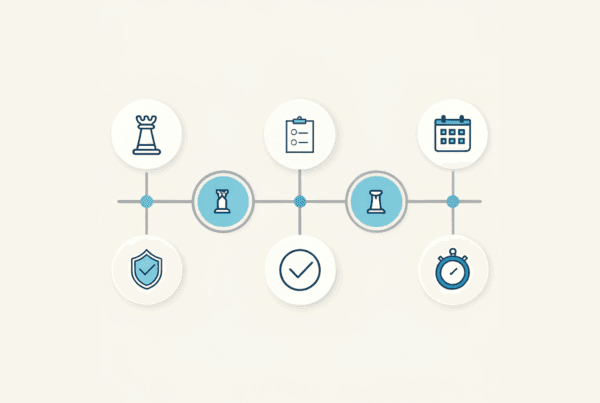Selling your hospice care practice in Los Angeles presents a unique opportunity. The market is active, but it also comes with significant challenges, from intense competition to increasing regulatory oversight. For owners in LA County, where 99% of hospices are for-profit, understanding how to position your practice is critical. This guide provides a clear look at the current landscape, helping you prepare for a successful transition.
Market Overview
The Los Angeles hospice market is unlike any other. If you are a practice owner here, you are operating in a uniquely competitive and active environment. Understanding these conditions is the first step toward a successful sale.
An Unprecedented Growth Spurt
Between 2010 and 2021, Los Angeles County experienced a 1,589% increase in the number of hospice agencies. This far outpaced the growth of the aged population. For sellers, this means there is a huge pool of potential buyers and investors looking for opportunities. It also means your practice is one of many, making it important to differentiate yourself.
The For-Profit Reality
The LA market is overwhelmingly for-profit. About 99% of the thousand-plus hospices in the county operate as for-profit businesses. This landscape is shaped by investors and business-minded owners, meaning buyers expect a high level of financial and operational professionalism. They are not just buying a practice. They are investing in a well-run business.
Key Considerations
The rapid growth in Los Angeles has brought increased scrutiny. The industry here has faced concerns about fraud and quality of care, with reports noting that many hospices have quality deficiencies. For a practice owner with a clean record and a history of excellent patient care, this presents a challenge and an opportunity. Proving your compliance and quality is not just a formality. It is a core part of your value proposition. Buyers are actively looking for well-run, low-risk operations. A core part of preparing for a sale is gathering the documentation and building the narrative that clearly separates your practice from the noise.
Market Activity
The primary driver of sales in the hospice sector is private equity (PE). These firms account for about three-quarters of all hospice transactions. Their involvement has professionalized the sale process and raised valuations for well-managed practices. However, PE firms are not the only buyers. Understanding the different types of buyers and what they look for is key to finding the right fit for your goals.
| Buyer Type | Primary Motivation | What This Means for You |
|---|---|---|
| Private Equity Group | To build a scalable platform for a future, larger sale. | They pay premium values for strong operations but expect a sophisticated process. |
| Strategic Buyer | To expand geographically or add hospice to their services. | They often seek a strong cultural fit and may preserve more of your local brand. |
| Local Competitor | To increase market share and achieve local synergies. | This can be a straightforward sale, but may not yield the highest valuation. |
The Sale Process
Many owners think of selling as a single decision, but a successful transaction is a well-managed process. It starts long before you ever speak to a buyer. The first phase is preparation. This involves cleaning up your financial records, organizing compliance documents, and looking at your operations through a buyer’s eyes. Next comes a professional valuation to understand what your practice is truly worth. Only then do you confidentially market the practice to a curated list of qualified buyers. Managing this process correctly creates competitive tension, which is what drives premium offers. Starting this journey 1-2 years before your target sale date is the best way to ensure you sell on your terms, not a buyer’s.
Valuation
Figuring out what a buyer might pay for your hospice practice goes beyond a simple rule of thumb. Sophisticated buyers, especially private equity, look at your business based on its true profitability and future potential. We find that value is driven by four main things.
- Your Adjusted EBITDA. This is your Earnings Before Interest, Taxes, Depreciation, and Amortization, but “adjusted” to add back owner perks or one-time expenses. It shows a buyer the true cash flow of the business.
- Your Quality Metrics. In the LA market, a documented history of high-quality care, positive survey results, and strong compliance is a major value driver.
- Your Patient Data. Buyers will analyze your average length of stay and payer mix. A stable patient base with a healthy length of stay is strongly tied to higher financial performance and a better valuation.
- Your Growth Story. Buyers don’t just buy your past performance. They buy your future potential. A clear story for how the practice can grow is a key part of commanding a premium price.
Post-Sale Considerations
A successful sale is about more than the final price. It is about securing your legacy and ensuring a smooth transition for your staff and patients. Thinking about these issues early in the process is important. Will you stay on for a period after the sale? How will your key employees be taken care of? Many deals today are structured with an earnout, where a portion of your payment is tied to future performance, or an equity rollover, where you retain a stake in the new, larger company. Planning for these scenarios helps protect your final proceeds and aligns the deal structure with your personal and financial goals for the future.
Frequently Asked Questions
What is unique about selling a hospice care practice in Los Angeles?
The Los Angeles hospice market is highly competitive and active, with a 1,589% growth in hospice agencies between 2010 and 2021. Almost all hospices (99%) in the county are for-profit, shaped by investors expecting high financial and operational professionalism. Sellers must position their practice distinctly to stand out in this crowded market.
Who are the typical buyers of hospice practices in Los Angeles and what do they look for?
The main buyers are Private Equity groups, Strategic buyers, and Local competitors. Private Equity firms seek scalable platforms and pay premium prices but require sophisticated processes. Strategic buyers want geographic or service expansion and may retain your local brand. Local competitors aim for market share and local synergies but might offer lower valuations.
What are the key considerations for owners before selling a hospice practice in LA?
Due to increased regulatory scrutiny and concerns about quality and fraud, owners need to demonstrate a clean record and high-quality care. Buyers look for well-run, low-risk operations, so gathering compliance documentation and building a strong narrative about your practice’s quality is essential to maximize value.
How is the valuation of a hospice practice determined in Los Angeles?
Valuation depends on four main factors:
- Adjusted EBITDA (true cash flow after adjustments for owner perks or one-time expenses)
- Quality metrics (quality care history, survey results, compliance)
- Patient data (length of stay, payer mix, patient stability)
- Growth story (future potential of the practice)
Buyers, especially Private Equity, consider both current profitability and future growth potential.
What should owners consider about the sale process and post-sale?
Selling is a process starting well before listing the practice. Preparation includes cleaning financial records, professional valuation, and confidentially marketing to qualified buyers. Post-sale, owners should consider transition plans, including staying on temporarily, employee care, earnouts, and equity rollovers to secure legacy and align with personal goals.



